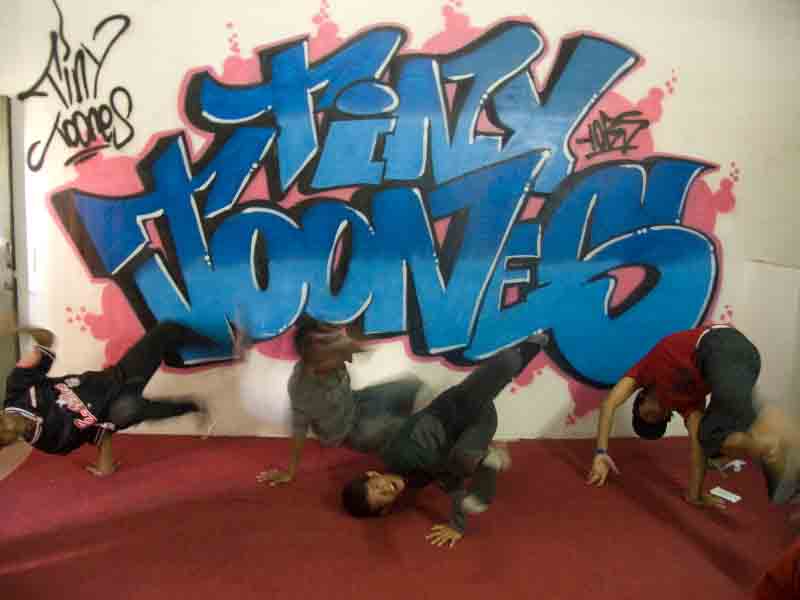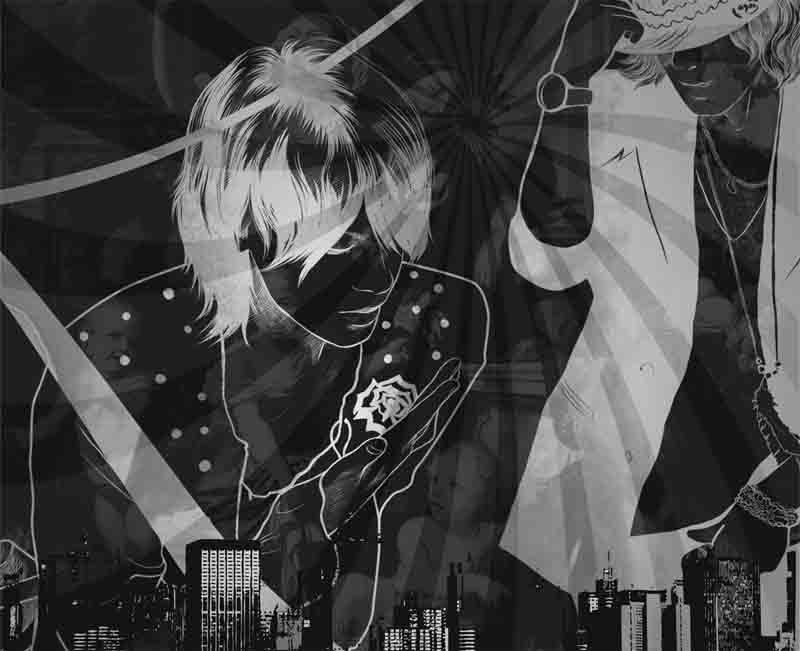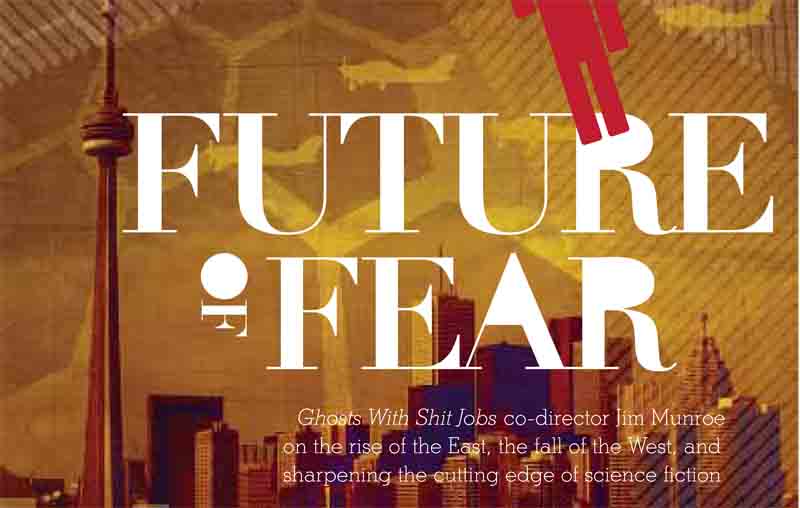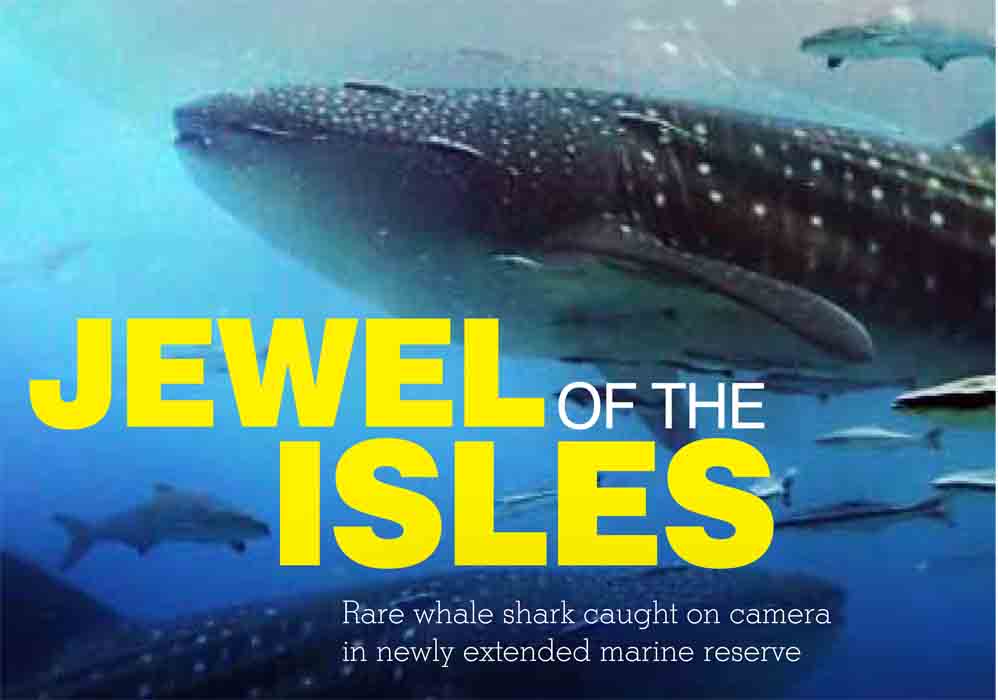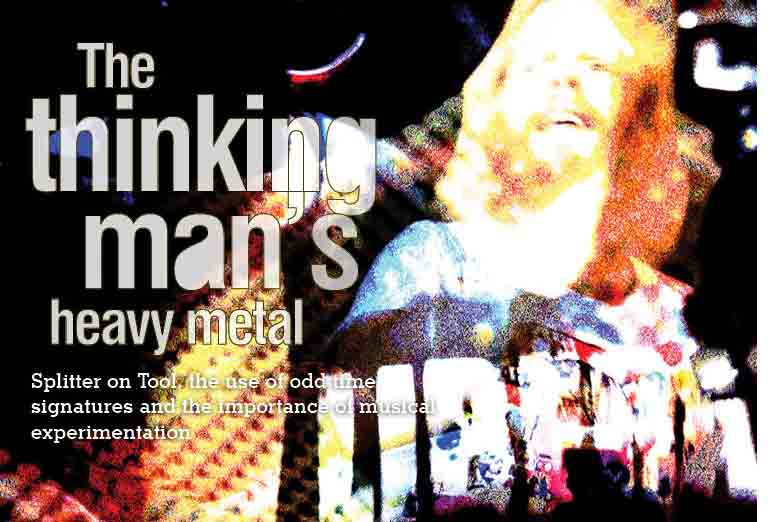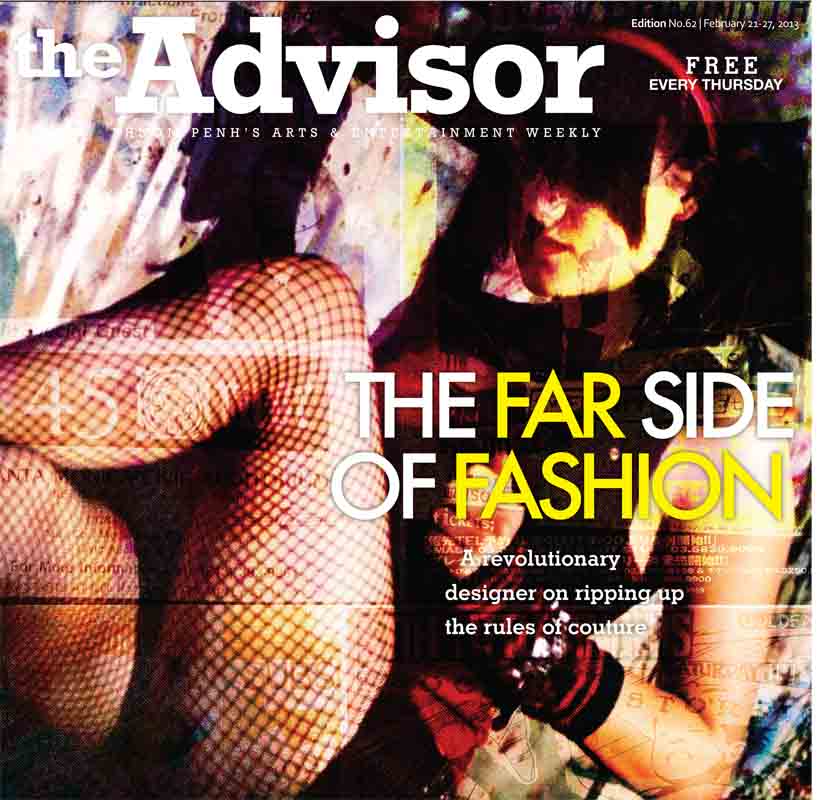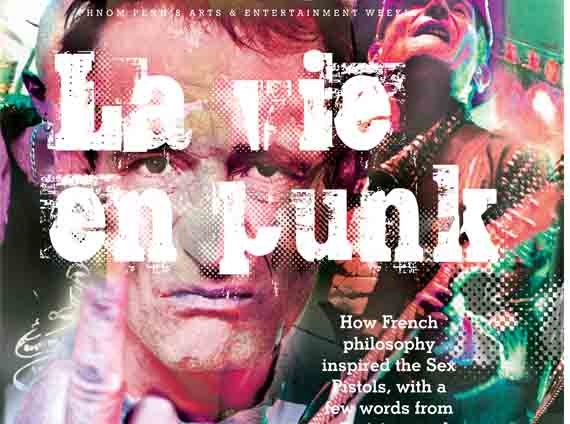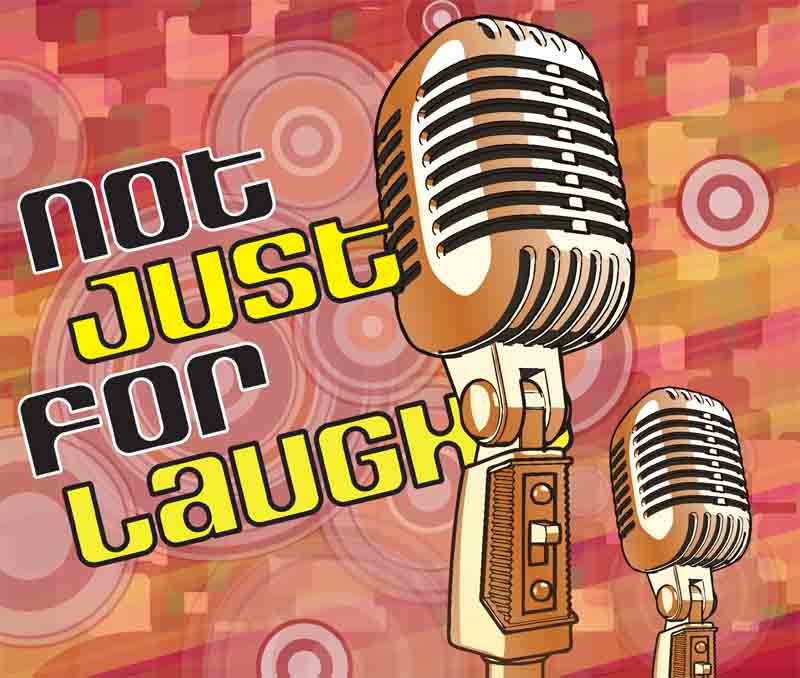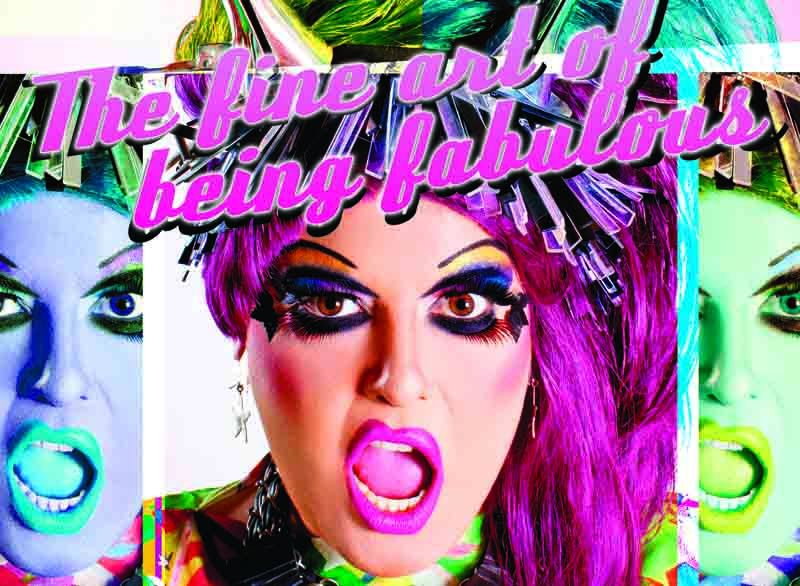Why do we laugh? The answer, argues Sigmund Freud in his 1905 book The Joke and its Relation to the Unconscious, is that jokes – much like dreams – satisfy our unconscious desires. “Jokes have not received nearly as much philosophical consideration as they deserve in view of the part they play in our mental life,” writes the Austrian psychoanalyst four decades before a young Lenny Bruce earned $12 and a spaghetti dinner for his first stand-up gig in Brooklyn. Freud has a point.
Stand-up comedy is arguably the oldest, most universal, basic and deeply significant form of humorous expression. From the fools and jesters of the Middle Ages, through 19th century humorists such as Mark Twain and Artemus Ward and finally onto the Rodney Dangerfields of today, comics are shamans: visionaries who use the alchemy of laughter to present the world in a different light.
“Changing the world, one endorphin at a time” is how Irish stand-up Aidan Killian puts it. A banker turned comedian (“Nothing funny about that”), he’s returning to Phnom Penh to offer a crash-course in stand-up comedy for the humorously challenged, cripplingly shy and/or would-be Lenny Bruces. Killian will school his comedy students over three days in everything from dealing with stage fright to great storytelling, with all proceeds – $100 per head – going to Operation Smile. Graduates will then deliver their own set at Pontoon on February 18 (interested? Call 012 968512 to register).
The Advisor caught up with Aidan in Thailand to talk Oscar Wilde, orgasms and how by being just a little bit funnier you can make the world a better place.
I was hoping we could explore the idea of ‘stand-up comedy as social and cultural mediation’, to borrow from one of the academic papers I’m reading.
Jesus Christ! What does that mean?
Once upon a time, about five centuries ago, Erasmus said something along the lines of ‘The path of folly leads to wisdom.’ The idea is that stand-up comedy isn’t just about making people laugh; it serves a much deeper purpose. The role of the comic as contemporary anthropologist, speaking truths that would land most journalists in jail; in your own words: ‘Changing the world, one endorphin at a time.’
Ahhhhh, nice! I haven’t used that phrase in a while. Well, Oscar Wilde, another great Irishman, said: ‘If you want to tell people the truth, make them laugh, otherwise they’ll kill you.’ And that’s really it, for me. I go to comedy gigs every night because that’s the life that I chose, and a lot of comedy really is just about getting that joke. That’s the truth. I’d love to say 90% of comedy is about sharing your soul and helping create consciousness among the masses so that we all live happily ever after and realise the oneness of humanity, but it’s not. Most comedy is about chasing the laugh, getting laughs, and you see a lot of that on TV. However, the comedy I love most, and I think many people love, is something that’s going to make you feel; something that’s going to make you think. Something that’s going to make you see something in a way you might never have seen before and makes you question the boundaries that you’ve created in your life. George Carlin, Lenny Bruce and Bill Hicks immediately come to mind.
George Carlin and Bill Hicks are my favourite comedians.
You obviously haven’t seen my set yet.
I have – and they’re still my favourite comedians.
Well, fuck you! [laughs] But look at what these guys did: Bill did 16 years of comedy and talked about his dad and him having a relationship. Silly jokes, but he made people laugh. And when people laugh, they release their stress. They’re in a place of happiness. It’s kind of like having an orgasm in the sense that you’re not thinking. You’re in that place of freedom and emptiness and nothingness. If you have that, then you’re more susceptible to positiveness, if that makes sense. So even though those jokes were silly and had no essence, he was still making people happy. Then he took it to a whole new level and everything he did – every word he spoke – had a purpose. That’s a huge gift. And we expect all of our students who do the course to be at least at that level after two and a half days’ working with me.
Ho ho. So does laughter have a role in making us more susceptible to certain ideas?
I see laughter as breaking down defences. I look for the truth that I most want to speak and then I say that, but if I just say that and it’s not funny, I look like a lecturer and most people are going to attack me because I’m not going along with mainstream thought. The laughter is necessary because if people laugh, they’re accepting what you’re saying – we’re laughing at the same things; we’re connecting. If they’re laughing, and the people around them are laughing, whatever you’re saying becomes the general consensus in that room: This Is Funny. Whether they agree with what I’m saying or not, they’ve accepted that what I’m saying is a funny experience. They’re laughing, and now I can pound them with some serious fucking truth: we are all Christ-like human beings; we are gods; we are kings and queens. I can say something like that – empower them – and then make them laugh. It’s like punching them with something good that they wouldn’t normally take because they’d be too busy going ‘No, no, no, I’m not a queen, I don’t deserve to be loved, I’m just an inputter in my job that I hate…’ But it gives people a chance to think, because you sandwich in what they need to hear between moments of laughter.
Humour helps you escape the censors.
Absolutely! I wonder if I could get away with the things that I say without being funny. I think they’d probably lock me up. I suppose that because people are laughing, you can just say whatever the fuck you want. It’s interesting because, as a comedian, you can kind of do whatever you want too. I can be out in public and I can say to someone speaking too much at a table, someone I think is taking up too much of the conversation and isn’t interesting enough, as a comedian I can say: ‘Hang on a second. You’re using up too many words. There are four people here and you should be taking up 25% but you’re taking up 80%. Can you please stop?’ I can say that and they’ll just go ‘Ah, he’s being funny.’
No, no, really. Just shut the fuck up.
[Laughs] That’s what it comes down to. It’s a label: that’s comedy, so it’s allowed. We like laughing. I can talk about Obama being captain of the child-killing drones, the face of the fourth Reich, because it’s just Aidan being funny. Only it isn’t. There are drones killing children and someone’s allowing that to happen. Blaming one person may be silly, but at the end of the day he’s Adolf Hitler… [Aidan’s doorbell rings in the background] Can I take this? I’m just going to open the door. I don’t know who it is. I don’t have any friends. Maybe it’s Obama. Shit! I shouldn’t have said that online… ARGGGH! [Pause] I got peanuts! I got peanuts! My security guard – mwah ha ha ha ha – brought me warm peanuts.
Nice. So, let’s take a closer look at how the folk who complete your course can deploy stand-up weaponry in their everyday lives.
Let’s put this in perspective: these guys are going to be doing stand-up comedy for the first time in their lives, most of them. They’re not going to be great in comparison to where they would be if they did stand-up comedy for one year, five years, 50 years because it takes time. However, they will leave the stage to the sound of laughter and clapping and they’ll feel really good about themselves, like I did after my first gig. I felt like the king of the world. The idea is this: most people think ‘I’m not funny; I’m not interesting; I could never do that; I’m not good at public speaking; I’m too shy,’ but this is simply a belief; an idea in your head. Once you break that idea and go to the opposite extreme – stand up on stage and do live stand-up comedy, which is videotaped so that you can see yourself making people laugh – you can never say that again. It breaks down this limiting belief that we’ve created and also it leaves people thinking: ‘What other things did I used to think I couldn’t do that I actually can do?’ That’s why I did stand-up: because people said I couldn’t.
Take us back to your first time.
Well, she was 16 and I was 25. She was screaming: ‘Get off me!’
Not THAT first time. The OTHER first time.
Oh! Oh, silly me. Oh my God. No. My first time was in a hotel with my girlfriend, by the way. Isabelle was her name. It still is… OK, right. First time: I was at a stand-up comedy show for expats in Tokyo with my friend and mentor at Bear Stearns, Steve. I said to him: ‘I could do that.’ And he said: ‘Why don’t you go put your name down?’ I had a month to prepare a three-minute set. I was so nervous. I don’t remember ever being so scared. I’ve been in fights; I’ve had a guy swing a glass at me, I’ve been scared but never this sort of fear. Your whole stomach goes completely. I think I went to the toilet seven times, but you don’t need to print that. My body didn’t work and my head was all over the place. I didn’t feel balanced or normal; I felt like I was drugged with fear. But I did it and as soon as I got the first laugh it was amazing; just beautiful. The most natural high I’d ever had.
But how do you teach others to be funny?
Well, let’s break it down. What exactly is happening when you’re on stage in front of people? Let’s list all the things that are happening. So, there are people looking at you. What else is happening?
You’re looking at them.
Correct! So, you’ve got eye contact. You’re speaking. You have to be funny. You’re trying to control the physical and psychological effects of fear. And you’re breathing; they’re connected. So, it’s a scary experience having to go up on stage and make people laugh. Most people would be scared of just having to get on stage and having people look at them, to a certain extent. Let’s break it down even more. Some people find it difficult just to hold eye contact with one person, not to mention a whole room. They get nervous and speak too fast, or they don’t speak at all. So we start off with the basics: get two people to hold eye contact for 30 seconds. What often happens is that people start to giggle. So why are they laughing? What is it that makes us laugh under such circumstances? It’s tension, and we release tension in two ways: one is through laughter; the other through sex. Either way, I win. Boom! [laughs] Once we understand that, we can use tension to be funny: we build tension and then release it. That’s one way of making people laugh. So first I want people to be confident enough just to stand on stage, then I want to get them to be funny. When they’re comfortable I want to hear about you. Who are you? What do you care about? What emotions do you feel? What makes you angry? What makes you sad? What scares you? I don’t want to hear ‘I was on a bus and something funny happened…’ I want something personal. Everything is funny. It’s quite amazing: there’s no subject you can pick, apart from rape and paedophilia, that isn’t funny. So what do you want to talk about? How do you want to make people laugh? What do you want to leave people with? Then I’m going to give you some comedy tools and you’re going to put them on top of whatever it is you want to talk about.
Give us an example of a comedy tool.
OK. I’m going to say two things and then you’re going to say whatever comes into your head, very quickly. Ready? Apples, oranges…
Bananas. That wasn’t funny at all.
The first thing, apples, was the point of introduction. I said ‘apples’, so you got a clue. The second point is confirmation of the first. I said ‘oranges’, so you now know where we’re going and can pick a random fruit because two points implies a direction and you can work out the next point yourself. So, how do we make that funny? If we can create a direction, and then break that direction, we’re misleading the audience. We say the opposite, so: ‘Me and Annie went for a walk in the park and we saw some ducks and we started feeding them and then I stabbed her in the face.’
You see the simplicity of it? Point one: we’re in the park. Point two: ducks are in the park. Point three: something completely random. Then we add in the details of the story, because it’s genuinely funnier if the audience actually cares about the story. You’ve made them feel something.
Most people don’t do this course because they want to become stand-up comedians. They just want to be able to be funny; to be interesting; to tell stories, to have that bungee-jump experience of self-help where you can actually stand on stage in front of a live audience and share your own unique life with them and make them laugh. If you can do that, you can do anything.
WHO: Aspiring stand-up comedians (or anyone who wants to polish their presentation skills)
WHAT: Aidan Killian’s comedy crash course
WHERE: Pontoon, St. 172
WHEN: February 15 – 18
WHY: “If you want to tell people the truth, make them laugh, otherwise they’ll kill you.” – Oscar Wilde
